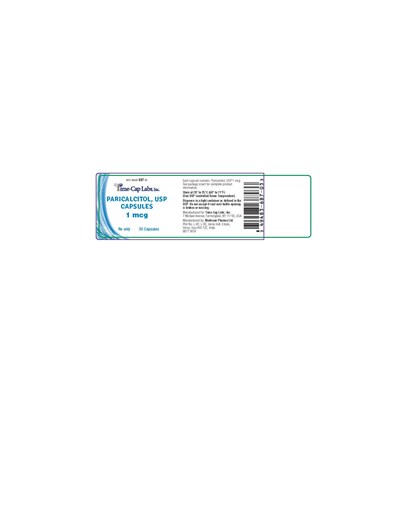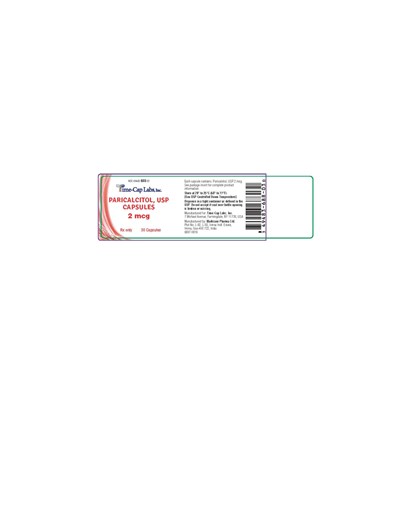Product Images Paricalcitol
View Photos of Packaging, Labels & Appearance
Product Label Images
The following 3 images provide visual information about the product associated with Paricalcitol NDC 49483-689 by Time Cap Laboratories, Inc, such as packaging, labeling, and the appearance of the drug itself. This resource could be helpful for medical professionals, pharmacists, and patients seeking to verify medication information and ensure they have the correct product.
687T Paricalcitol 1 mcg 30 count NL 16 478

This is a medication package of Paricalcitol, 1mcg Capsules, containing 30 capsules. The medicine is manufactured by FlameCap Labs. The package also contains storage instructions and a warning. It also mentions the manufacturer of the medicine and the fact that it is prescription-only. The complete product information is available in the package insert.*
688T Paricalcitol 2 mcg 30 count NL 16 479

PARICALCITOL, USP capsules are manufactured by Time-Cap Labs, Inc. Each capsule has 2 mcg of Paricalitol, a medication that regulates calcium levels in the body. The product should be stored at controlled room temperature and dispensed in a tight container as defined by USP rules. The medication should not be accepted if the seal over the bottle opening is missing or broken. Information about the complete product is available in the package insert. The medication is manufactured by Marksans Pharma Ltd. in Goa, India.*
689T Paricalcitol 4 mcg 30 count NL 16 480

This is a medication description for Paricalcitrol capsules manufactured by Time-Cap Labs. Each capsule contains 4mcg of the active ingredient Paricasital. The recommended storage temperature is 20-25°C. This medication should be dispensed in a tightly sealed container per USP guidelines. The manufacturer address, lot number, and expiration date are also mentioned in the text.*
* The product label images have been analyzed using a combination of traditional computing and machine learning techniques. It should be noted that the descriptions provided may not be entirely accurate as they are experimental in nature. Use the information in this page at your own discretion and risk.